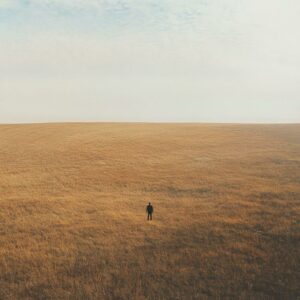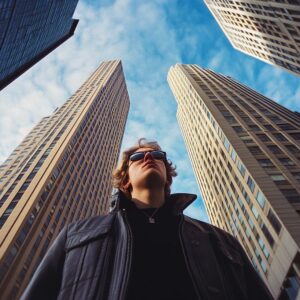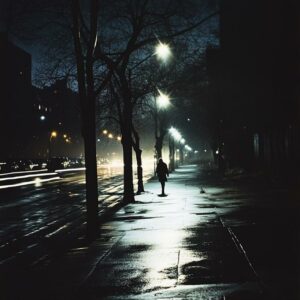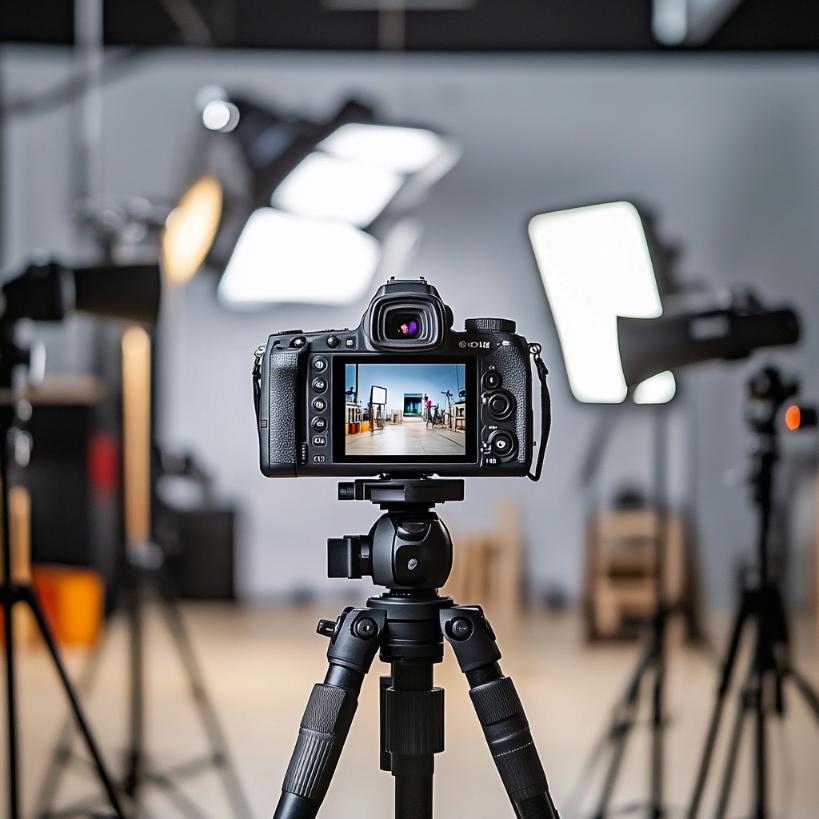Mastering Camera Angles: Essential Techniques for Content Creators
Introduction
In the world of content creation, the power of visual storytelling cannot be overstated. Every frame, every shot, and every angle you choose contributes to the narrative you’re crafting. Camera angles are more than just a technical aspect of filming; they are a fundamental tool that can transform the way your audience perceives and engages with your content. Whether you’re filming a vlog, a short film, or a product demo, the right camera angle can enhance the emotional depth of a scene, highlight important details, and guide your viewers’ attention in subtle yet impactful ways.
In this article, we’ll explore the essential camera angles every content creator should master. From the classic eye-level shot to more dynamic angles like the Dutch tilt, we’ll break down the techniques and when to use them to elevate your visual storytelling. Whether you’re a seasoned creator looking to refine your skills or a beginner eager to learn, this guide will provide you with the insights you need to make your content more engaging and visually appealing.
Why Camera Angles Matter
Visual Storytelling
Camera angles are one of the most powerful tools in a content creator’s arsenal. They serve as the lens through which your audience experiences the story you’re telling. Different angles can drastically change the emotional impact of a scene, subtly influencing how viewers interpret and feel about what they’re seeing. For example, a low-angle shot looking up at a character can evoke a sense of power or intimidation, making the character appear larger-than-life. Conversely, a high-angle shot can make a character seem small, vulnerable, or overwhelmed, helping to set the mood and tone of the scene.
By carefully choosing the angle from which you shoot, you can guide your audience’s emotions and direct their focus to specific details. Whether you want to create tension, show a character’s dominance, or simply present an unbiased perspective, the right camera angle is crucial in conveying the story you want to tell.
Engagement
In a world flooded with content, keeping your audience engaged is more challenging than ever. This is where the strategic use of camera angles comes into play. A well-chosen angle can turn an ordinary shot into something visually captivating, encouraging viewers to stay engaged with your content. Dynamic angles, such as a moving shot that follows the action or a unique perspective that viewers aren’t used to seeing, can add a layer of interest that keeps them hooked.
Moreover, by varying your camera angles, you can maintain visual interest throughout your video, preventing it from feeling static or monotonous. This not only keeps your audience’s attention but also enhances the overall aesthetic quality of your content. In essence, mastering camera angles is not just about technical proficiency—it’s about creating a more engaging, immersive experience for your viewers that leaves a lasting impression.
Common Camera Angles and Their Uses
Eye-Level Shot

The eye-level shot is one of the most natural and commonly used camera angles. Here, the camera is positioned at the subject’s eye level, creating a neutral and balanced perspective. This angle mimics how we see the world in everyday life, making it ideal for creating a connection between the subject and the audience.
Eye-level shots are perfect for neutral, straightforward scenes where the goal is to present information or a subject without bias or emotional manipulation. They are widely used in interviews, vlogs, and tutorials, where the focus is on clear communication and relatability. This angle allows the audience to engage with the subject on an equal footing, making the interaction feel more personal and direct.
High Angle

In a high-angle shot, the camera is positioned above the subject, looking down on them. This angle tends to diminish the subject, making them appear smaller, weaker, or more vulnerable. It can create a sense of superiority from the viewer’s perspective, emphasizing the subject’s fragility or insignificance.
High-angle shots are effective in scenes where you want to convey vulnerability, defeat, or submission. They are often used in storytelling to evoke empathy or to show a character in a moment of weakness. For example, in a dramatic scene where a character is overwhelmed, a high-angle shot can enhance the emotional impact by visually representing their sense of being overpowered.
Low Angle

The low-angle shot involves positioning the camera below the subject, looking up at them. This perspective makes the subject appear larger, more powerful, and dominant. The low angle can create a sense of awe or intimidation, depending on how it’s used.
Low-angle shots are ideal for emphasizing strength, power, or authority. They are often employed in scenes where the subject is meant to appear heroic or commanding. For example, in action sequences or moments of triumph, a low-angle shot can reinforce the character’s dominance or the significance of the moment.
Dutch Angle (Tilt)

The Dutch angle, also known as a tilt or canted angle, is a technique where the camera is tilted to one side, creating a diagonal horizon line. This unconventional angle disrupts the normal horizontal and vertical lines in the frame, leading to a sense of imbalance and unease.
The Dutch angle is used to convey tension, disorientation, or psychological unease. It’s commonly seen in scenes that depict chaos, confusion, or instability. Filmmakers often use this angle in thrillers or horror films to create a visual sense of discomfort that matches the emotional tone of the scene.
Over-the-Shoulder Shot

The over-the-shoulder shot is taken from behind a character, typically focusing on what the character is looking at. This angle is used to show the subject’s perspective, creating a connection between the character and the viewer by placing them in the character’s shoes.
Over-the-shoulder shots are a staple in dialogue scenes, where establishing the spatial relationship between characters is essential. This angle helps the audience understand the dynamics of a conversation, as it provides context by showing both the speaker and the listener’s reactions. It’s also effective in scenes where the perspective of a character is crucial to the narrative, such as in decision-making moments or confrontations.
Advanced Techniques for Content Creators
Dynamic Camera Movement
Panning and Tilting:
- Panning and tilting are two fundamental techniques that introduce motion into your shots without moving the camera’s position. Panning involves rotating the camera horizontally from a fixed point, while tilting moves the camera vertically. These movements can guide the audience’s attention, follow the action, or reveal new elements within a scene.
- Panning is particularly effective in scenes where you want to capture a wide landscape or follow a subject moving across the frame, such as a person walking or a car driving by. Tilting is often used to emphasize vertical elements in a scene, such as revealing the height of a building or the length of an object. Both techniques help maintain viewer engagement by adding dynamic motion that keeps the visual narrative flowing smoothly.
Dolly and Tracking Shots:
- Dolly and tracking shots involve physically moving the camera through space, often on a dolly or track, to follow the action. A dolly shot typically moves the camera closer to or further from the subject, while a tracking shot moves alongside the subject, often maintaining a consistent distance.
- These techniques create a sense of depth and immersion, allowing the audience to move through the scene as if they are part of it. Dolly shots are excellent for emphasizing a subject by slowly zooming in or out, adding intensity or intimacy. Tracking shots are ideal for following characters as they move through a space, maintaining continuity and enhancing the sense of movement. These techniques are often used in cinematic sequences to draw viewers into the world of the story.
Angle Combinations
Creating Tension:
- Combining high and low angles within a scene can be an effective way to build tension. Alternating between these angles can create a visual contrast that heightens the emotional stakes and emphasizes power dynamics between characters.
- For example, during a confrontation, using a high angle on one character and a low angle on the other can visually communicate dominance and submission. As the tension escalates, these angles can be exaggerated or reversed to reflect shifts in power or control. This technique is often employed in thriller or action scenes to keep the audience on edge and convey the intensity of the moment.
Enhancing Drama:
- Close-ups combined with low angles can dramatically emphasize the importance or emotional weight of a scene. This combination draws the viewer’s attention to specific details, such as a character’s expression or an object of significance, while also magnifying the impact of the moment.
- In a dramatic scene where a character delivers a critical line or experiences a pivotal moment, a close-up from a low angle can intensify the emotional resonance. This technique is often used in climactic moments in films and videos, where the goal is to make the audience feel the gravity of the situation.
Experimenting with Unconventional Angles
Breaking the Rules:
- While mastering traditional camera angles is essential, some of the most memorable and impactful shots come from breaking the rules. Experimenting with unconventional angles allows content creators to push creative boundaries and develop a unique visual style.
- Unusual angles, such as shooting from the ground up or placing the camera at an extreme tilt, can create a distinctive aesthetic that stands out. These angles are particularly effective in experimental films, music videos, or any project where the goal is to surprise and intrigue the audience. By stepping outside the conventional framework, you can create visually arresting scenes that leave a lasting impression.
These advanced techniques offer content creators the tools to elevate their work beyond basic shot composition. By incorporating dynamic camera movements, combining angles to enhance tension and drama, and experimenting with unconventional perspectives, you can craft content that is not only visually compelling but also deeply engaging for your audience.
Practicl Tips for Content Creators
Planning Your Shots:
- Importance of Pre-Production Planning: One of the keys to successful content creation is thorough planning, especially when it comes to camera angles. Before you even start filming, it’s crucial to have a clear vision of how you want each scene to look. This involves planning your shots during the pre-production stage, considering the angles that will best tell your story and convey the emotions you intend to evoke. Storyboarding can be an invaluable tool here, allowing you to visualize each shot and make informed decisions about the angles that will create the most impact. By planning your camera angles ahead of time, you can ensure a more efficient shooting process and a more cohesive final product.
Adapting to Your Environment:
- Choosing the Best Angles on Location: Every filming environment presents its own unique challenges and opportunities. When on location, it’s important to adapt your planned camera angles to the space and available equipment. Consider the physical constraints of the environment—tight spaces may require creative solutions like using a wide-angle lens or finding elevated positions to get the shot you want. Additionally, the natural lighting, background elements, and even the movement of people or objects within the space can influence your choice of angles. Being flexible and willing to adjust your approach based on the location will help you make the most of your surroundings and capture the best possible footage.
Continuous Learning:
- Studying and Practicing: The world of content creation is constantly evolving, and staying ahead means continuously honing your craft. One of the best ways to improve your understanding and use of camera angles is by studying the work of others. Watch films, television shows, and online videos with a critical eye, paying attention to how different angles are used to convey mood, emotion, and narrative. Additionally, there are countless tutorials and courses available that can provide new insights and techniques. Practice is equally important—experiment with different angles in your own projects, and don’t be afraid to make mistakes. Each experience will help you grow as a content creator and refine your ability to use camera angles to their full potential.
By planning your shots, adapting to your environment, and committing to continuous learning, you can elevate your content and ensure that your use of camera angles is both intentional and effective. These practical tips will not only help you create visually compelling videos but also enhance your storytelling abilities, making your work more engaging and impactful for your audience.
Conclusion
Camera angles are more than just a technical aspect of content creation—they are a powerful storytelling tool that can significantly enhance the visual impact of your work. By understanding and mastering various camera angles, such as eye-level shots, high and low angles, Dutch tilts, and over-the-shoulder shots, you can convey emotions, set the mood, and guide your audience’s perspective in subtle yet impactful ways.
Advanced techniques, like dynamic camera movements and combining different angles, offer even greater possibilities for creating tension, enhancing drama, and crafting a unique visual style. The key to using camera angles effectively lies in careful planning during pre-production, adapting to the environment on set, and continuously learning from other creators and your own experiences.
By incorporating these practices into your content creation process, you can create more engaging, visually interesting, and memorable videos that resonate with your audience. Remember, the angles you choose are not just about capturing a scene—they’re about telling a story that captivates and connects with your viewers.

